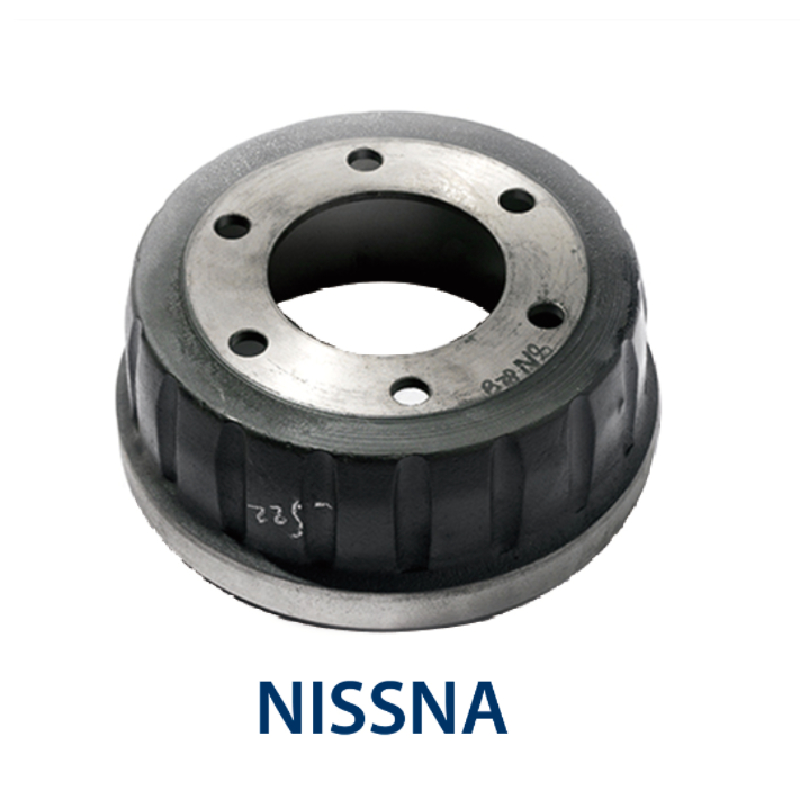Oct . 10, 2024 16:55 Back to list
what do brake drums do
Understanding the Role and Function of Brake Drums in Vehicles
Brake drums are an essential component of many vehicles' braking systems, particularly those equipped with drum brakes. These components play a critical role in ensuring safety by enabling effective stopping power. To understand what brake drums do, it is necessary to delve into their function, design, and the overall mechanics of drum brake systems.
What Are Brake Drums?
Brake drums are circular, hollow pieces of metal typically mounted on the axle of a vehicle. They are a part of the drum brake mechanism, which includes other components such as brake shoes, springs, and hydraulic parts. The design of a brake drum allows it to provide a sturdy surface against which the brake shoes press to create friction, ultimately slowing down or stopping the vehicle.
How Do Brake Drums Work?
The operation of brake drums hinges on the principles of friction. When the driver depresses the brake pedal, hydraulic pressure is generated within the brake lines. This pressure forces the brake shoes outward against the inner surface of the brake drum. The friction created between the brake shoes and the drum surface slows the rotation of the wheel, thereby decreasing the vehicle's speed.
A key feature of brake drums is their ability to dissipate heat generated during braking. When the brake shoes are pressed against the drum, friction generates heat. The design of the drum, typically made from cast iron or composite materials, allows it to withstand high temperatures and helps in cooling down after repeated use. This heat dissipation is crucial because overheating can lead to brake fade, a dangerous condition where the brakes become less effective.
Advantages of Brake Drums
Brake drums have several advantages over their counterparts, disc brakes. One of the primary benefits is their cost-effectiveness. Drum brakes tend to be less expensive to manufacture and replace, making them an attractive option for many vehicles, particularly in budget-friendly models and larger vehicles like trucks.
what do brake drums do

Additionally, drum brakes provide more surface area for friction compared to disc brakes, resulting in a potentially more effective braking performance under certain conditions. They also typically feature a self-adjusting mechanism, which means they can automatically compensate for wear over time, maintaining optimal performance without requiring frequent manual adjustments.
Applications of Brake Drums
While drum brakes were once the standard for all vehicles, their application has evolved over the years. Today, they are primarily found in the rear brakes of many passenger cars, light trucks, and larger vehicles. In contrast, front brakes predominantly feature disc brake systems, which tend to offer superior performance in high-speed and high-stopping scenarios.
Drum brakes and brake drums also shine in applications requiring consistent and gradual braking, making them suitable for rear wheels that do not bear the brunt of most stopping forces. Their reliability in such scenarios has ensured their continued use despite advancements in braking technology.
Maintenance and Performance Considerations
Like all components of a vehicle, brake drums require regular maintenance to ensure optimal performance. Over time, the friction material on the brake shoes will wear down, and the drum's inner surface may develop grooves or become warped due to excessive heat. These factors can significantly impact braking efficiency and safety.
Routine inspections and servicing can help identify wear and tear before they lead to more significant problems. This may involve resurfacing the drum or replacing it altogether, along with the brake shoes. Ensuring that the brake system is functioning correctly is paramount to vehicle safety and performance.
Conclusion
Brake drums play a vital role in the braking systems of many vehicles, providing effective stopping power through the principle of friction. Their design and operational functionality contribute significantly to vehicle safety, especially when properly maintained. While advancements in technology have led to widespread use of disc brakes, the utility and cost-effectiveness of brake drums ensure that they remain an important component of many vehicles. Understanding their function helps drivers appreciate the complexity and importance of vehicle safety systems, ultimately leading to safer driving practices.
-
Explore Japan: Ultimate Travel Guide & Authentic Experiences
NewsAug.19,2025
-
Your Brake Drum Man: Premium & Reliable Brake Drums for Sale
NewsAug.18,2025
-
ROR Web Development: Build Fast, Scalable, Secure Apps
NewsAug.17,2025
-
Scania Brake Drums: OEM Quality for Optimal Safety & Durability
NewsAug.16,2025
-
R.V.I: Advanced Remote Visual Inspection for Precision
NewsAug.15,2025
-
Discover HYUNDA: Innovative Vehicles, Equipment & Solutions
NewsAug.14,2025
